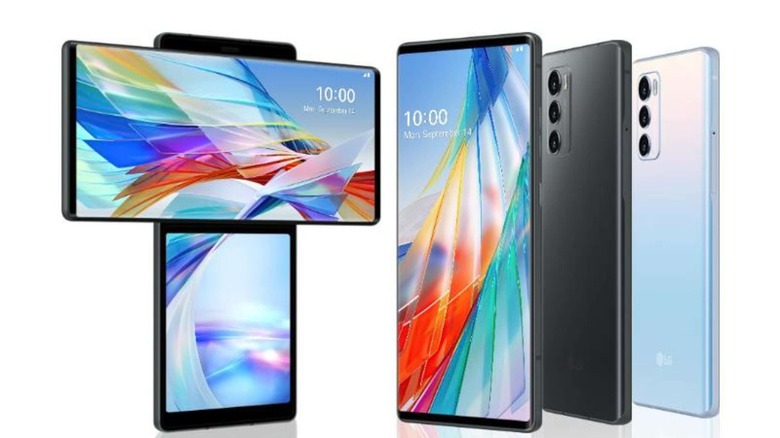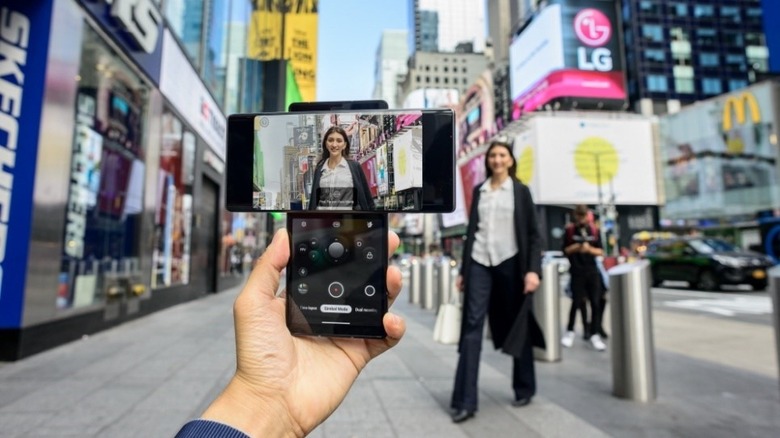The Strange Swiveling Android Phone That Didn't Quite Cut It
Amid the current trend of innovating smartphone form and function, it might seem like every idea, no matter how improbable, is taking up space in the phone marketplace. Flip phones have arisen, zombielike, from the early 2000s to become the new telecommunications hotness. LG claims it will deliver stretchable, fabric-like screens soon, calling up memories of streaming sketchy AVIs to digital projectors in days of yore. Even genuine future tech like "truly wireless" bone conduction earbuds have the form factor of over-ear headphones of the Hannah Montana era. Everything old is new again.
Alas, for LG — they of the stretchy screens — at least one long-forgotten piece of telephonic tech is likely to stay dead. The company's Wing smartphone, a wild dual-display piece of tech that swiveled into a T shape with a screen going both ways, has neither secured a loyal customer base nor inspired many imitations since its 2020 debut. SlashGear gave the Wing a tough but fair review on release. 2 years on, with so much fresh design in the smartphone space, we felt it was time for a retrospective.
One winged angel
In the end, the failure of the LG Wing came down to the market factor it's hardest to predict: buy-in. Bringing a truly new device or service to customers is, in part, a gamble. If no one does what you do, you're either a trailblazer or a sucker. With product design, there's no sure way to predict whether an unprecedented build will be an iPhone-level game-changer or a Nokia N-Gage punchline.
LG did itself no favors when marketing the Wing. As noted in our review, LG apps could traverse the Wing's weird digital crucifix. However, third-party programs that efficiently handled other form factors had no idea what to make of the perpendicular look. LG didn't just need customers to make the Wing work. It required software innovation, which never came.
Amazingly, LG and Best Buy are still selling the LG Wing. The phone's failure is a bit more far-reaching than leaving retail shelves; LG stopped making smartphones on July 31, 2021, after losing the equivalent of $4.5 billion over the previous six years. While the Wing and a few other premium handsets have received software updates as late as 2022, the company will not be making any more Wings or any phones, for that matter.
In a sense, however, the Wing did what LG wanted. The phone-and-a-half was the first product of LG's Explorer Project, which focused less on profit than on delivering innovative concepts. The results may have informed LG's decision to stop making smartphones.

